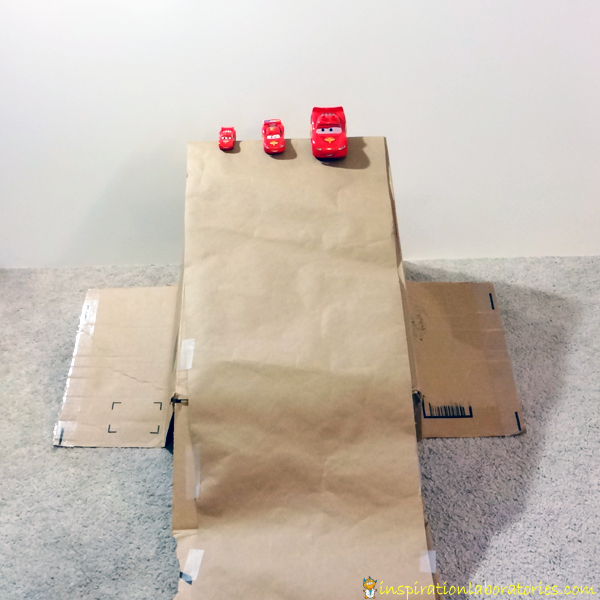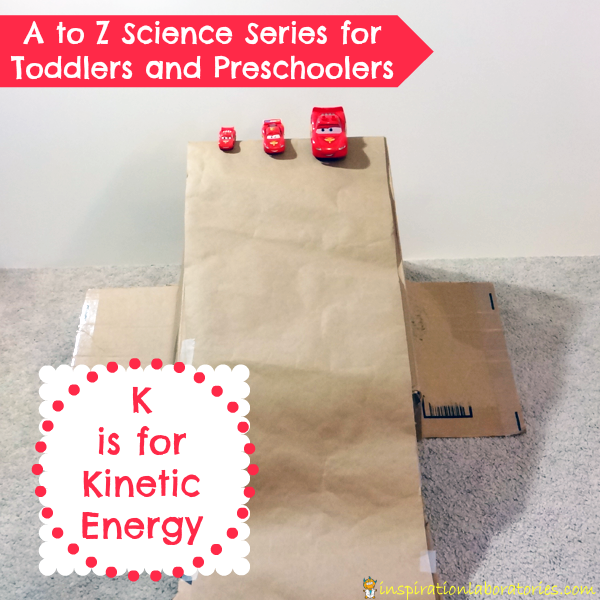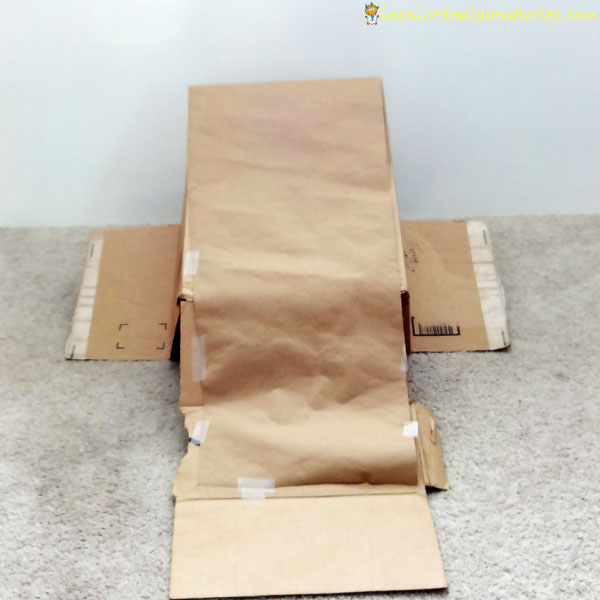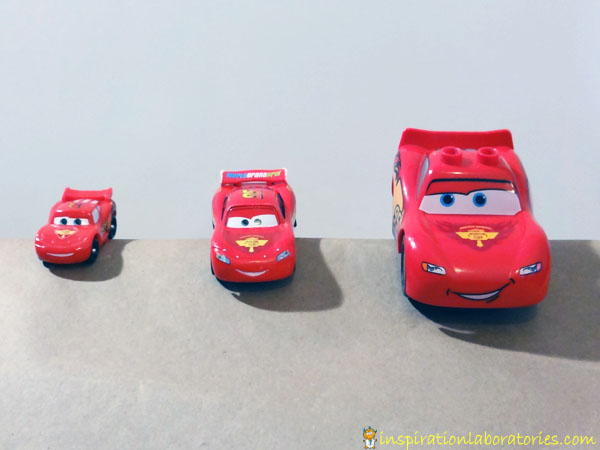K is for Kinetic Energy
Our A to Z Science series for toddlers and preschoolers here at Inspiration Laboratories continues with letter K. K is for Kinetic Energy.
Kinetic Energy
Kinetic energy is the energy of motion. If an object is moving, it has kinetic energy. Usually, when we talk about kinetic energy, we also talk about potential energy. If a car is sitting at the top of a ramp, it has a certain amount of energy because of its position. If you let the car go, it will move down the ramp. The gravitational potential energy of the car sitting at the top of the ramp is converted into kinetic energy once the car begins to move.
For toddlers and preschoolers, it’s not really necessary to use the words kinetic energy and potential energy. They can begin to understand the concepts without using the words.
Exploring Kinetic Energy with Ramps
Aiden has always loved playing with ramps. You can make ramps from lots of different materials. We have used a giant cardboard tube to learn about friction {and kinetic energy}. We’ve also looked at chain reactions {transferring kinetic energy} using train tracks. Our most recent experience with ramps was at the Legoland Discovery Center. Aiden spent most of his time building and racing cars on the ramps there.
Make a ramp out of whatever materials you have – train tracks, a cardboard tube, a box, a board, a piece of cardboard, or any flat surface that you can incline. For today’s investigation, I made our ramp from a cardboard box.
Set up a simple kinetic energy experiment using a ramp and some cars.
We chose to test how fast Lightning McQueen will travel down the ramp. We have three different versions of Lightning McQueen – a tiny car, a hot wheels car, and a Lego car.
Start each car at the top of the ramp and time how long they take to reach the bottom. Have your child predict which car will reach the bottom first {which will go the fastest?}. Observe what happens. Which one reached the bottom first? Why? In our case, the hot wheels car was the fastest, but only barely.

If the masses {weights} are equal, the car with the greatest velocity {speed} would have the highest kinetic energy. If the velocities are equal, the car with the greatest mass would have the highest kinetic energy. If neither the velocities nor the masses are equal, you would need to do a little math to figure out the kinetic energy {kinetic energy = 1/2 mass x velocity squared}. Obviously that’s not for toddlers or preschoolers, but I thought you might like to see it anyway.
For the kids, just focus on asking questions, making predictions, and making observations.
Other Ways to Experiment with Ramps
Here are more ideas for things to change in your experiment to explore kinetic energy using ramps.
- Change the height of the ramp.
- Change the shape of the objects going down the ramp {a round ball vs. a square block for example}.
- Change the size of the objects but keep the weight the same.
- Change the weight of the objects but keep their size the same. {Send a dump truck filled with different weights down the ramp.}
- Change the surface of the ramp {cardboard, paper, wood, metal, plastic, sandpaper, cloth, etc.}
Share Your Explorations
Head over to the Science for Kids Community on Google+ and share pictures of your kinetic energy explorations. Or stop by the Inspiration Laboratories Facebook page and share with us there.
More Experiments to Try
- Check out this list of toddler and preschool science experiments.
- Learn how to make a rubber band powered car and other vehicles.
- Try out these kinetic energy experiments and activities for kids!
Subscribe to the Inspiration Laboratories weekly newsletter. Each issue has exclusive hands-on science explorations for children, a recap of our latest activities, and special resources selected just for you!
Linking up here.




Leave a Reply